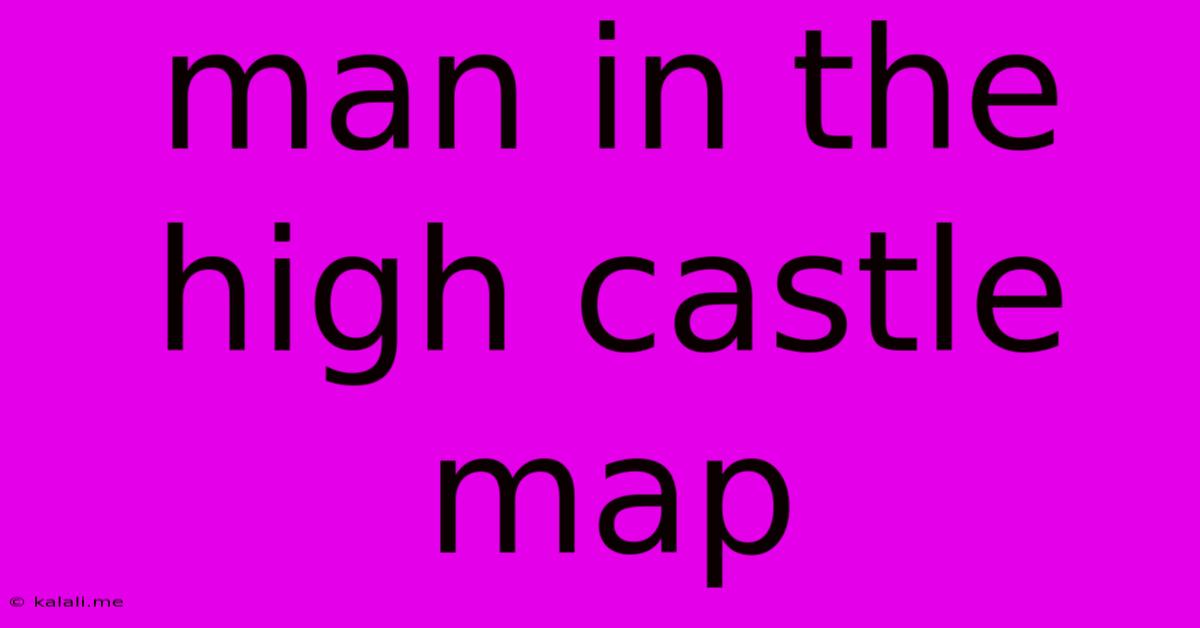Man In The High Castle Map
Kalali
May 19, 2025 · 4 min read

Table of Contents
Decoding the Map in The Man in the High Castle: A Geographic and Narrative Exploration
The alternate history of The Man in the High Castle, whether in the book or the Amazon series, is powerfully visualized through a single, captivating prop: the map. This seemingly simple artifact is far more than just a geographical representation; it's a key narrative device that underscores the show's central themes of power, resistance, and the fragility of reality. This article delves into the intricate details of the map, exploring its geographical inaccuracies, symbolic significance, and its role in shaping the story's narrative.
This article will explore the fictional geography presented in the map, analyzing its discrepancies from our real-world understanding and the narrative reasons behind these choices. We'll examine the map's symbolic representation of power dynamics within the Axis-controlled United States and the subtle clues it offers about the characters' journeys and the overarching conflict. Finally, we'll discuss how the map functions as a visual storyteller, enhancing the show's immersive atmosphere and leaving viewers with a lasting impression of the altered reality presented.
Geographical Inaccuracies and Narrative Purpose
The map depicted in The Man in the High Castle significantly alters the geopolitical landscape of North America. The United States is divided between the Greater Japanese Pacific States and the Nazi American Reich, a division starkly represented by the contrasting color schemes and territorial lines on the map. While certain major cities maintain their real-world locations, the boundaries of these territories often defy geographical logic, reflecting the arbitrary and violent nature of the regime's power.
These deliberate geographical inaccuracies are not accidental; they serve a crucial narrative purpose. The distorted borders emphasize the instability and artificiality of the Axis victory. They highlight the fundamentally unjust and violent nature of the regime's claim to power. The map visually reinforces the themes of oppression and the struggle for freedom that drive the narrative forward.
The altered geography also creates intrigue and mystery. The discrepancies between the map's representation and the viewer's knowledge of real-world geography subtly hint at the alternative reality’s complexities and the possibilities within the narrative. The unknown regions, the blurring of familiar borders, and the stark visual difference between the Japanese and Nazi-controlled zones all contribute to the overall tension and uncertainty which fuels the narrative.
Symbolic Representation of Power and Control
Beyond its geographical function, the map serves as a potent symbol of power and control. The clear division of territory visually represents the dominance of the Axis powers and the subjugation of the American people. The map’s prominence in the show, often displayed in government buildings and high-ranking officials' offices, underscores the regimes’ conscious efforts to project an image of stability and absolute control.
However, the very presence of the map, particularly its subtle inaccuracies and the existence of the films predicting an alternative future, hints at the fragility of this seemingly absolute control. The map, therefore, becomes a visual metaphor for the precarious nature of power in this alternate history. It visually represents the underlying tension and the potential for rebellion that simmers beneath the surface of the seemingly stable Axis rule.
The Map as a Narrative Tool
The map is not merely a background prop; it actively participates in the narrative. It guides the characters' journeys, providing a visual framework for their movements and interactions within this altered world. The map's presence in key scenes subtly underscores the political landscape and the characters’ place within it, deepening our understanding of their motivations and actions.
Furthermore, the map contributes to the overall atmosphere and visual storytelling of the show. Its detailed style and slightly anachronistic aesthetic enhance the show's sense of realism, while simultaneously highlighting the fictional nature of the world being depicted. The map serves as a visual anchor, consistently reminding the viewer of the unique and unsettling reality of the Man in the High Castle universe.
Conclusion: More Than Just a Map
The map in The Man in the High Castle transcends its basic function as a geographical representation. It is a multifaceted narrative device that embodies the show's core themes, reflects the power dynamics within the story, and shapes the viewers' experience. Through its geographical inaccuracies, symbolic weight, and integral role in the plot, the map becomes a crucial element in understanding the complex and captivating world of The Man in the High Castle. It's a compelling visual metaphor that lingers long after the credits roll.
Latest Posts
Latest Posts
-
Instead Of Cornflour What Can I Use
May 19, 2025
-
Fourier Transform Of A Gaussian Function
May 19, 2025
-
Why Does Melting Point Decrease Down Group 1
May 19, 2025
-
Do Torches Stop Mobs From Spawning In The Nether
May 19, 2025
-
Do Capital Letters In Email Addresses Matter
May 19, 2025
Related Post
Thank you for visiting our website which covers about Man In The High Castle Map . We hope the information provided has been useful to you. Feel free to contact us if you have any questions or need further assistance. See you next time and don't miss to bookmark.